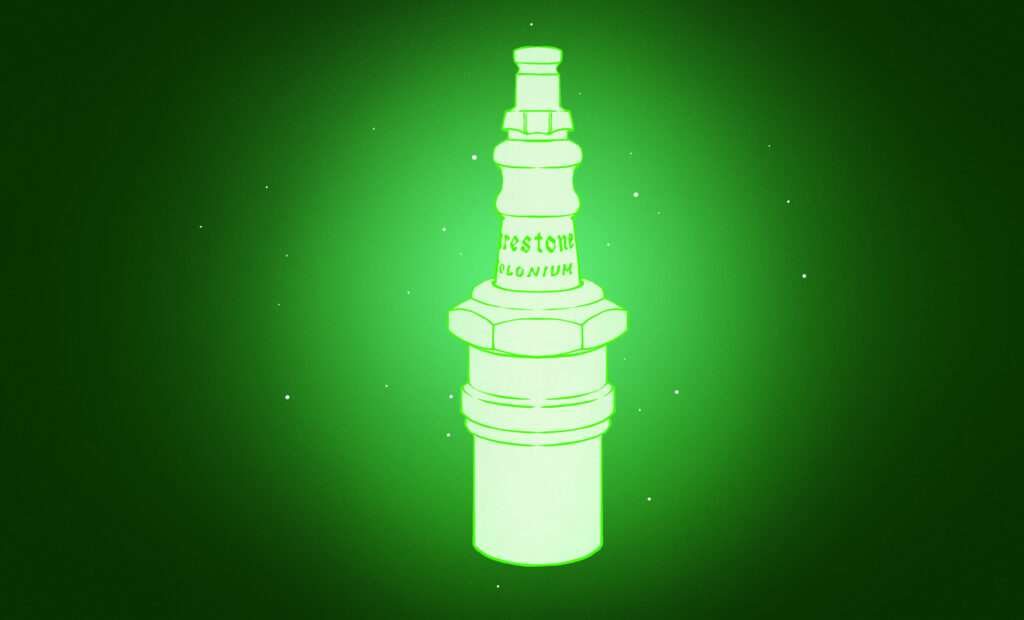
In the mid-20th century, the intersection of nuclear science and automotive engineering led to an unusual product: spark plugs containing the radioactive element polonium-210. Developed by the Firestone Tire and Rubber Company, these innovative components were intended to improve engine performance, but they quickly faded from the market due to safety concerns and diminishing effectiveness.
The concept of using radioactivity in spark plugs emerged during a time when nuclear technology was viewed with optimism. Firestone’s polonium spark plugs, introduced around 1940, drew on the idea that the decay of polonium-210 would ionize the air-fuel mixture in the combustion chamber. This was believed to facilitate a stronger spark and enhance combustion efficiency.
The roots of this idea can be traced back to a 1924 patent filed by inventor Albert Hubbard, which proposed the use of radium for similar purposes. Firestone later opted for polonium-210, citing concerns over the cost and danger associated with radium. According to their patent, polonium was deemed more effective as it could create favorable conditions for spark generation even under adverse circumstances.
How Polonium Spark Plugs Worked
Firestone’s patent, granted in 1941, explained how the alpha particles emitted by the decaying polonium would ionize the gas in the spark gap. This process was meant to increase the number of ions available, thereby reducing the voltage needed to create a spark. The company claimed that tests showed a 30% reduction in engine revolutions required for starting at extremely low temperatures of -15° F when using polonium plugs.
Incorporating polonium into the nickel alloy of the spark plug electrodes ensured that it was positioned to ionize the air charge effectively. Despite the theoretical advantages, the actual performance of these plugs was short-lived.
Challenges and Decline of Usage
The half-life of polonium-210 is approximately 138 days. This means that within a year, around 84% of the polonium would have decayed, significantly diminishing any performance benefits by the time the plugs reached consumers. Additionally, as the plugs aged, deposits on the electrodes might block the alpha particles, further limiting their effectiveness.
Despite the initial excitement, advertisements for polonium-impregnated spark plugs ceased by 1953. The combination of a short-lived radioactive source and potential performance issues contributed to their decline in popularity. Furthermore, the challenges associated with the storage, disposal, and safety of radioactive materials likely played a role in their eventual discontinuation.
Today, examples of these spark plugs can still be found online, though the radioactive material has long since decayed. Auctions reveal remnants of this unique moment in automotive history, illustrating a time when radioactivity was viewed as a promising solution for engineering challenges.
While the polonium spark plugs may have offered some minor advantages when first manufactured, the combination of rapid decay and practical limitations ultimately prevented them from becoming a lasting fixture in the automotive industry. Their story serves as a reminder of the era’s fascination with nuclear technology and the complexities that arise when innovation meets safety concerns.







